Ginseng Sprout Trials
After the success of the Saffron trials, the AVF are excited to announce that they are on a new path of discovery and are running a trial growing ginseng sprouts in the AVF Lab.
In this series of blogs, over the following weeks you can follow the growing process with the team, providing regular updates and insights from the AVF Lab at all stages.
At the upcoming AVF Summit at VertiFarm held October 8 October 10, 2024, in Dortmund, one of the pillars of the AVF Summit is exploring the evolving landscape of medicinal plant cultivation, including Traditional Chinese Medicine. So, it is exciting that prior to that event that the team at AVF will have run their own trials of ginseng sprouts.
Origin of Korean Ginseng
Korean Ginseng is a herbal medicine native to Korea. Its scientific name is Panax ginseng, and it is known for its medicinal properties and significant role in traditional Korean medicine. The root has garnered global recognition for its health benefits, which civilians have used for thousands of years. Its efficacy is empirically acknowledged.
The first recorded mentions of ginseng date back to 33-48 BC in China. Ginseng was initially harvested wild from the forests of Korea, but it was rare and highly prized. Human soil-based cultivation started around a thousand years ago. By the Joseon Dynasty (1392–1910), Korean farmers had perfected the art of ginseng cultivation, and farming ginseng took off in the 16th century. The region of Geumsan became famous for its ginseng farms and high-quality ginseng. The plants need a gentle northeast-facing slope that drains well on sandy loam to grow well and with harvesting after 4-6 years.
Why is ginseng so popular?
The popularity of ginseng lies in its proven health benefits, which make Korean ginseng popular in traditional medicine. Fresh ginseng is the raw ingredient in red ginseng, which has a range of medicinal purposes that have been the subject of research over the last twenty years. Research on its efficacy is ongoing.
What is ginseng sprout?
Ginseng sprouts refer to the young, tender shoots of the ginseng plant (genus Panax), typically harvested before the roots are mature.
Like the mature ginseng root, the sprouts produce Ginsenoside (saponins of ginseng) in the leaves and stems, which have the same use in traditional medicine. In scientific tests, the ginseng sprouts produced more than eight times the amount of saponins as the root in a much shorter growing time. The combination of the high levels of Ginsenoside and the short growing time creates the market for this product.
Health Benefits
The health benefits attributed to ginseng sprout, depending on the type of Ginsenoside, include:
- Rb1 – Central nervous system suppression, antipyretic analgesic, liver function protection
- Rb2 – anti-diabetes, anti-arteriosclerosis, hepatocellular proliferation
- Rc – Pain relief, protein and lipid synthesis promotion
- Rd – Stimulation of adrenocortical hormone secretion
- Rh2 – Cancer cell growth inhibition, tumor growth inhibition, skin immunity
- Rg1 – Learning function improvement, anti-fatigue action
- Rg2 – Anti-dementia, blood pressure lowering, cancer cell metastasis inhibition, anticancer drug resistance control
Market Status of Ginseng Sprouts
The ginseng sprout market is young, only emerging in the last 15 years. Until recently, Ginseng sprouts have only been grown in Korea. However, that is changing, and the AVF has managed to successfully import seedlings from Korea this year. Cultivation technology is usually soil-based or uses hydroponics, and the number of plant factories in Asia growing ginseng sprouts is increasing.
AVF Trial Step 1 – First Seedlings
Cultivation Techniques:
Within the hydroponic system, you can grow ginseng sprouts using several techniques:
- Immersing the roots in stagnant water
- Immersing the roots in circulating water
- Spraying the seedlings
We are using the spraying technique in the AVF Lab.
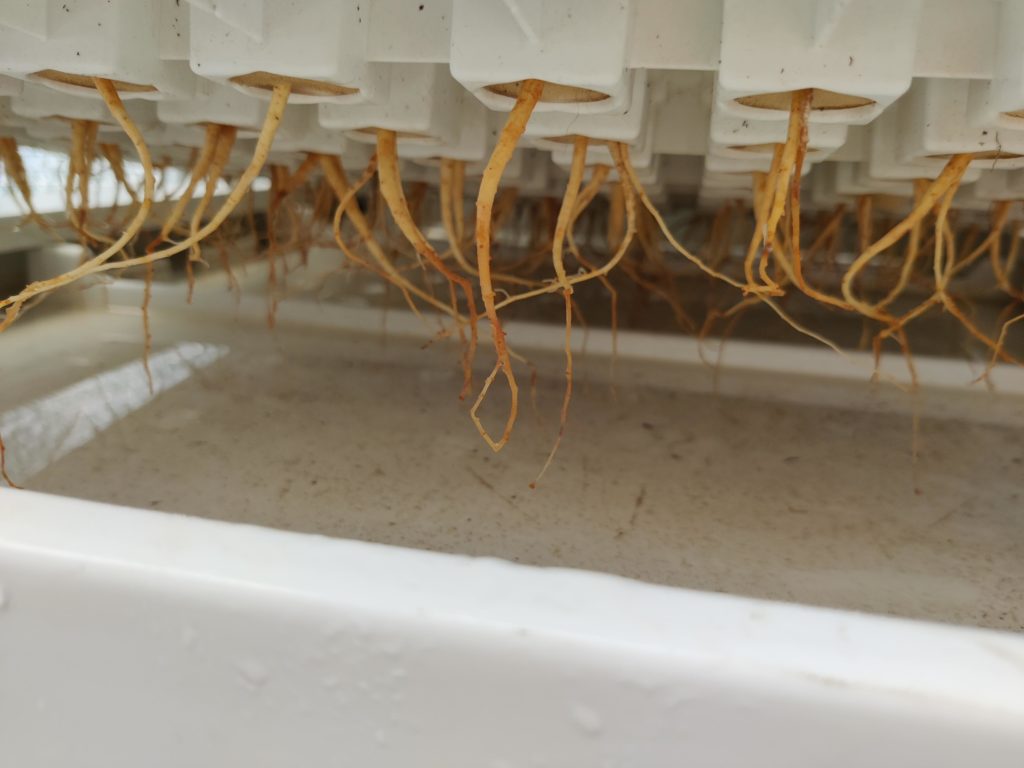 AVF planted the first seedlings in mid-May.
AVF planted the first seedlings in mid-May.
AVF ran a simple test to see whether keeping the seedlings in the freezer helped sprout better plants. The seedlings from the freezer did much better.
It took 3 weeks for sprouts to develop the first signs of growth
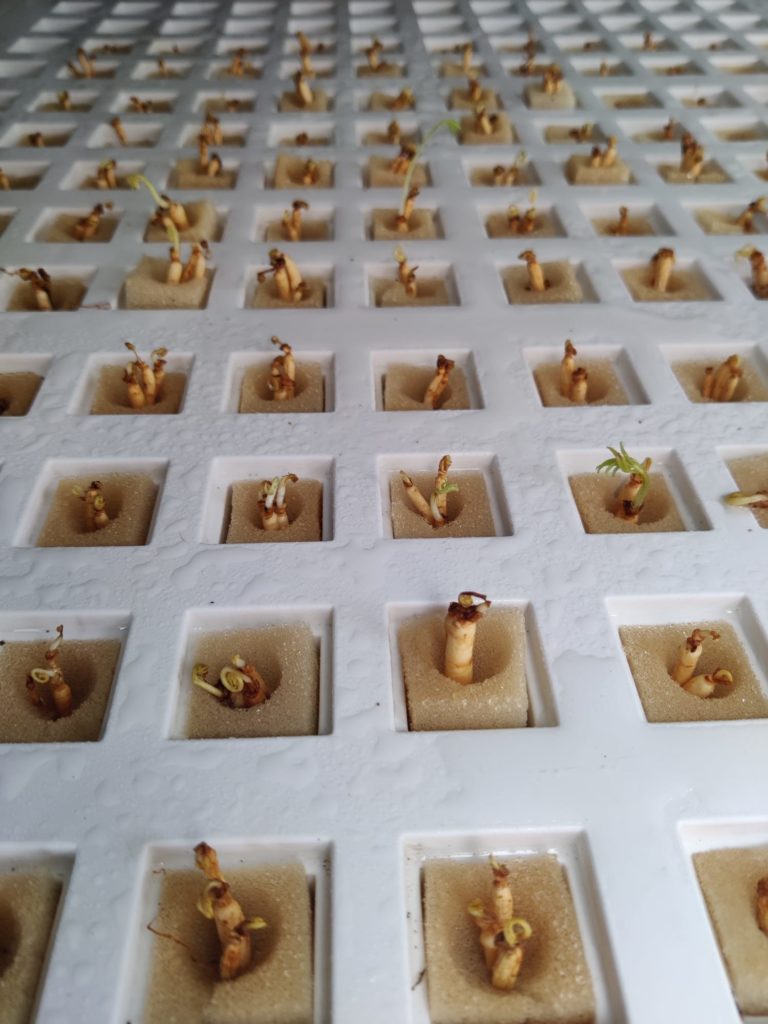 and 5-6 weeks to leaf growth. This meets the normal expected parameters for growing ginseng sprouts.
and 5-6 weeks to leaf growth. This meets the normal expected parameters for growing ginseng sprouts.
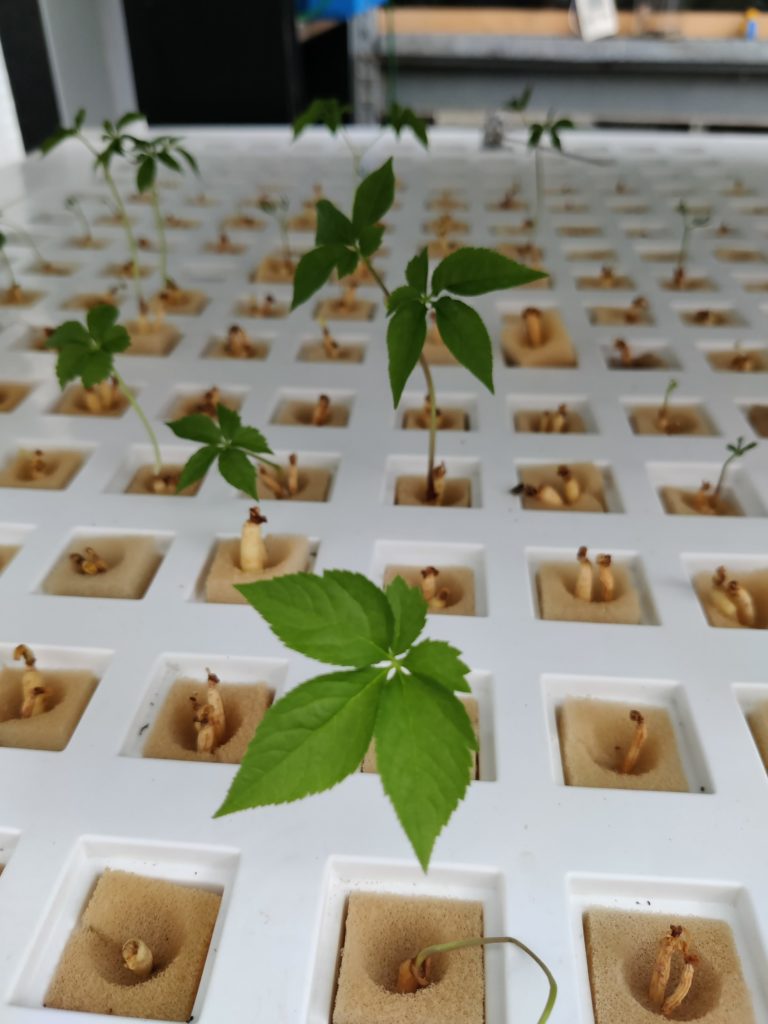
Key Learning: Keeping ginseng seedlings in the freezer before planting out works best
Using the spraying technique minimizes the amount of water required and simultaneously supplies nutrients to the leaves and roots. Ginseng leaves prefer high humidity, so this technique helps satisfy this requirement for optimal growth.
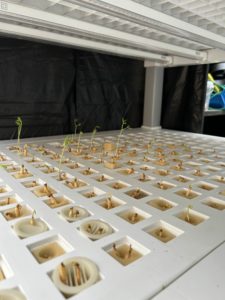 Join us on our journey as we post regular updates of the Ginseng Sprout Trials at the AVF Lab.
Join us on our journey as we post regular updates of the Ginseng Sprout Trials at the AVF Lab.


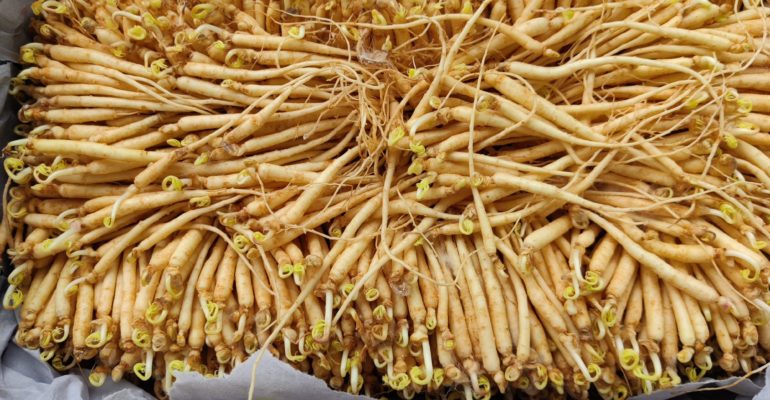
Comments are closed.